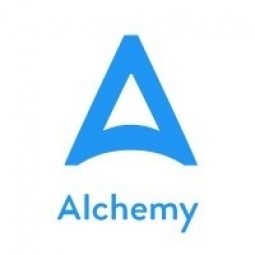Origin by Ocean's Successful Implementation of Alchemy’s Formulating ELN Solution in New Biorefinery Lab

Applicable Industries
- Marine & Shipping
- Pharmaceuticals
Applicable Functions
- Process Manufacturing
Use Cases
- Personnel Tracking & Monitoring
Services
- Testing & Certification
About The Customer
Origin by Ocean is a company that is developing the core biorefining technology to extract value from marine biomass like blue-green algae and bladderwrack. They are using this technology to produce biologically sustainable products and ingredients for food, beverage, cosmetics, and pharma. The company was co-founded by Dr. Mari Granström, an organic chemist with years of experience working as a research scientist at BASF and R&D Director at Stora Enso. As the Chief Science Activist at Origin by Ocean, Dr. Granström is committed to ensuring that the company's lab practices align with its vision and goals.
The Challenge
Origin by Ocean, a company developing core biorefining technology to extract value from marine biomass, had the opportunity to set up a brand-new lab in September 2020. The challenge was to ensure that all their detailed R&D data was captured digitally, reusable, and AI-ready from day one. Dr. Mari Granström, the Chief Science Activist and Co-founder of Origin by Ocean, had previous experience with labs conforming to software, which often led to inefficiencies and misalignments with the company's vision and goals. She was determined to find a solution that would fit the company's vision and goals in terms of lab best practices, rather than the lab having to adapt to the software.
The Solution
The solution came in the form of Alchemy’s modern cloud solution for formulators, which was designed specifically for materials scientists. This formulating ELN solution with integrated LIMS was implemented in Origin by Ocean's new lab. It allowed the company to digitize their unique lab processes and highly customized data capture based on its biorefining activities. The solution also enabled them to interlink their processes and data based on how they work and link these processes with their overarching business objectives. The deployment of the customized ELN and LIMS solution was made efficient by working with an Alchemy staff chemist who understood their domain, formulation processes, and test methods. The intuitive User Experience made it easy to find formulations, test results, and analyses. The tool was also designed to evolve as new staff, novel processes, and additional equipment come onboard.
Operational Impact

Case Study missing?
Start adding your own!
Register with your work email and create a new case study profile for your business.
Related Case Studies.

Case Study
Case Study: Pfizer
Pfizer’s high-performance computing software and systems for worldwide research and development support large-scale data analysis, research projects, clinical analytics, and modeling. Pfizer’s computing services are used across the spectrum of research and development efforts, from the deep biological understanding of disease to the design of safe, efficacious therapeutic agents.

Case Study
Fusion Middleware Integration on Cloud for Pharma Major
Customer wanted a real-time, seamless, cloud based integration between the existing on premise and cloud based application using SOA technology on Oracle Fusion Middleware Platform, a Contingent Worker Solution to collect, track, manage and report information for on-boarding, maintenance and off-boarding of contingent workers using a streamlined and Integrated business process, and streamlining of integration to the back-end systems and multiple SaaS applications.

Case Study
Drill ship power challenge: hybrid solution solves distribution issues
Aspin Kemp & Associates (AKA), a manufacturer of electrical power and control systems headquartered in Montague, PEI, encountered one with its hybrid power initiative, the first hybrid drill floor destined for installation on ultra-deepwater drill ships operated by Transocean, Swiss offshore drilling contractors. Since on-site modification was impossible and scrap recycling of any modifications was unacceptable, the enclosures had to arrive ready-to-install.

Case Study
Process Control System Support
In many automated production facilities, changes are made to SIMATIC PCS 7 projects on a daily basis, with individual processes often optimised by multiple workers due to shift changes. Documentation is key here, as this keeps workers informed about why a change was made. Furthermore, SIMATIC PCS 7 installations are generally used in locations where documentation is required for audits and certification. The ability to track changes between two software projects is not only an invaluable aid during shift changes, but also when searching for errors or optimising a PCS 7 installation. Every change made to the system is labour-intensive and time-consuming. Moreover, there is also the risk that errors may occur. If a change is saved in the project, then the old version is lost unless a backup copy was created in advance. If no backup was created, it will no longer be possible to return to the previous state if and when programming errors occur. Each backup denotes a version used by the SIMATIC PCS 7 system to operate an installation. To correctly interpret a version, information is required on WHO changed WHAT, WHERE, WHEN and WHY: - Who created the version/who is responsible for the version? - Who released the version? - What was changed in the version i.e. in which block or module of the SIMATIC PCS 7 installation were the changes made? - When was the version created? Is this the latest version or is there a more recent version? - Why were the changes made to the version? If they are part of a regular maintenance cycle, then is the aim to fix an error or to improve production processes? - Is this particular version also the version currently being used in production? The fact that SIMATIC PCS 7 projects use extremely large quantities of data complicates the situation even further, and it can take a long time to load and save information as a result. Without a sustainable strategy for operating a SIMATIC PCS 7 installation, searching for the right software version can become extremely time-consuming and the installation may run inefficiently as a result.








